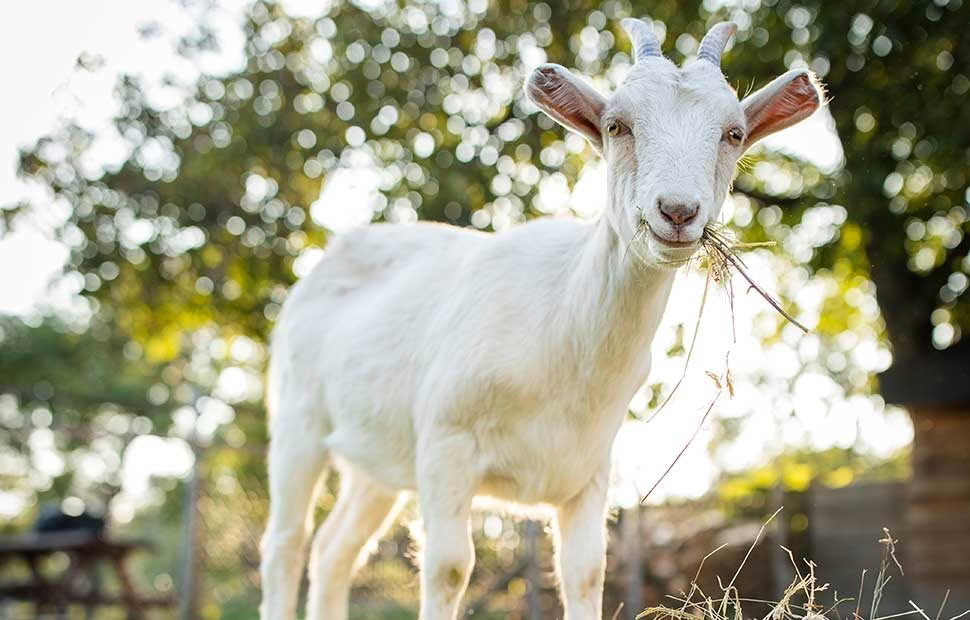Don’t kid around with goat welfare: How to best protect the goats on your block SPONSORED

Goats are intelligent, inquisitive, and social animals
Created for the Ministry of Primary Industries
All animal owners have a legal responsibility to provide for their animals under the Animal Welfare Act 1999. By knowing and meeting your responsibilities, you can avoid fines, or in more serious cases, prosecution. Goats are intelligent, inquisitive, and social animals. If you are thinking about adding goats to your lifestyle block, here are some tips about how to provide for their health and welfare.
Check your property is appropriately fenced. Your local council may also have specific rules about keeping goats.
WHAT ARE TETHERING REQUIREMENTS?
It’s best not to tether goats, but if it’s necessary to do so, there are legal requirements you must meet.
Tethered goats must have access to shelter at all times that:
•is dry
• shades them from the sun and protects them from rain
• protects them from extreme temperatures.
This is because tethered goats cannot seek natural forms of shelter such as trees or hedges, which would be part of their normal behaviour.
Shelter is particularly important for goats because they are not as good at withstanding cold conditions as other kinds of livestock. This is due to the consistency of their coat and fat distribution. Tethered goats must also have access to food and water at all times.
You should not tether any goat kids, nursing or pregnant goats, and no goat should be permanently tethered.
WHAT EQUIPMENT SHOULD BE USED FOR TETHERING?
Collars used on goats must:
• be the right size and fit for the goat – poorly fitted collars can cause pain and distress
• allow for normal breathing, panting and drinking
• not be so tight or heavy that they can cause skin abrasions, cuts or swelling
• not be so loose that they can cause an injury.
Tethers must be an appropriate length and material to allow for normal breathing, panting and drinking, and keep them from being caught up on nearby objects and injured.
Collars should be made of flexible durable materials such as leather or nylon.
Chains should not be used as a collar for goats.
An aerial running line (where the chain of the tether is attached to an aerial wire or rope so that the goat can move along the line) can provide the goat with more room to move around.
You should check any goats on tethers at least every 12 hours.
WHERE SHOULD I PUT GOATS ON MY LIFESTYLE BLOCK?
Goats should be kept with at least one other goat companion or ideally in a herd. Goats can also live with sheep, cows or horses. If you need to tether a goat, make sure the area is clear of anything the tether could get caught on. If it is tethered on a roadside verge, make sure it can’t get into the path of vehicles.
YOUR LEGAL RESPONSIBILITIES AS AN ANIMAL OWNER:
Your animals are your responsibility, and you need to plan for them accordingly.
Under the Animal Welfare Act 1999, you must provide your animals with:
• Proper and sufficient food and water;
• Adequate shelter;
• The opportunity to display normal patterns of behaviour;
• Appropriate physical handling;
• Protection from and rapid diagnosis of injury and disease.
WHERE CAN I FIND OUT MORE?
• Check out the Goat Code of Welfare at https://www.mpi.govt.nz/animalregs
• Chat with your veterinarian or rural supply store
• Contact MPI at animal.welfare@mpi.govt.nz.

 This article first appeared in NZ Lifestyle Block Magazine.
This article first appeared in NZ Lifestyle Block Magazine.
